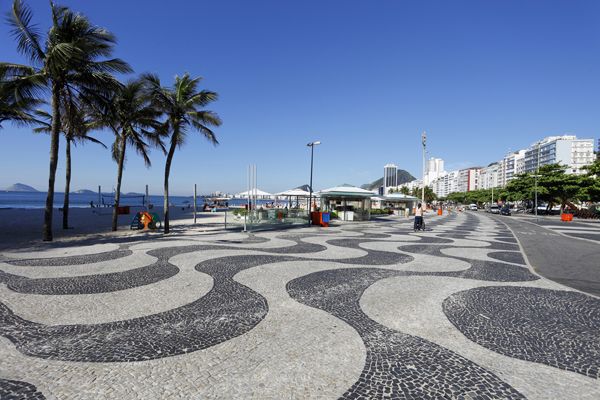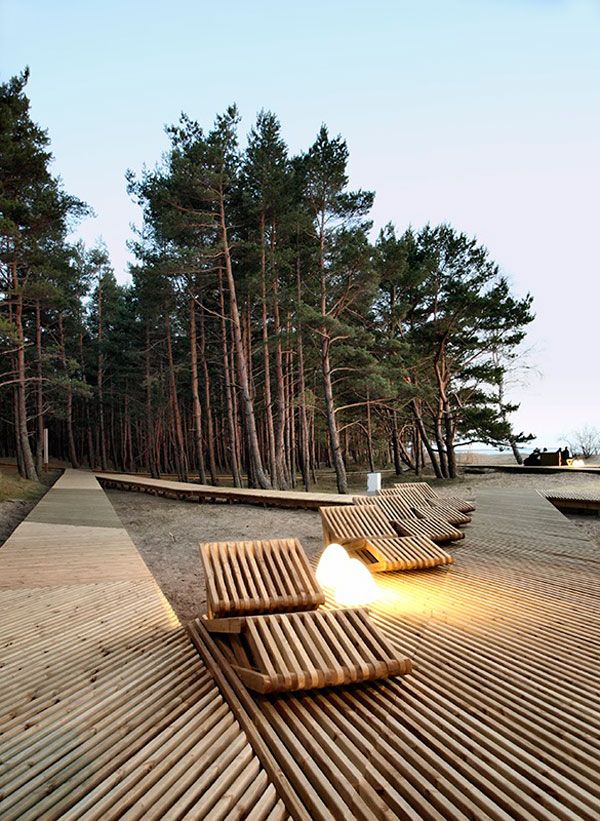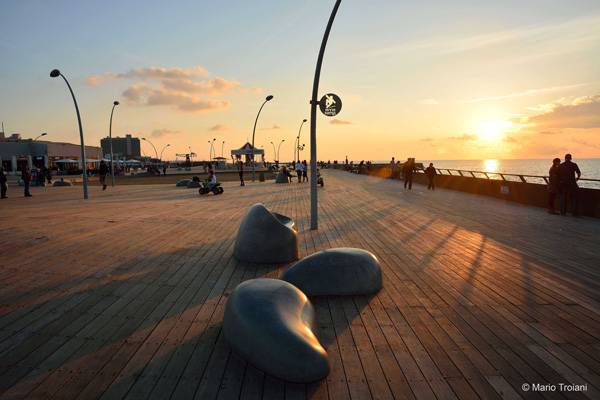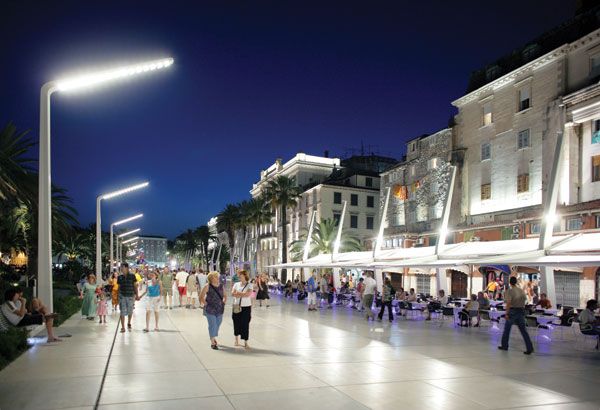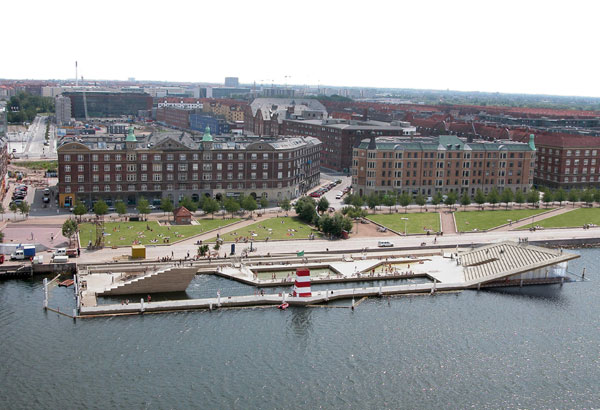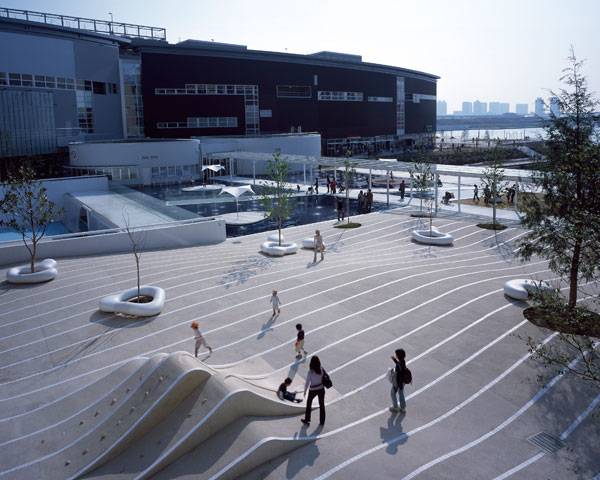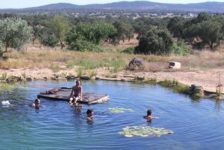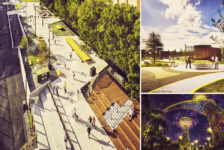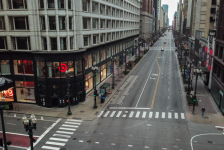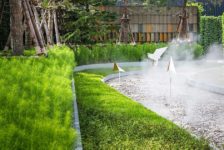We take a look at 10 of the world’s best examples of seaside regeneration projects. Edge, limit, border, extremity. All of these words signify the transition from one state to another — a differentiation of conditions, a change of form, a possible ending or beginning. The line between sea and land could not bear more meaning and significance. But what happens when one is asked to treat that line? To change it, re-shape it, or transform it according to human needs and desires? Here are 10 exceptional projects that unravel along the sea; penetrate it, break it, or bend it; and reveal what working on the edge means in landscape architecture.
Seaside Regeneration Projects
1. Copacabana Beach Promenade, Rio de Janeiro, Brazil, by Burle Marx — A Top Classic
Omitting the work of a great master such as Burle Marx from an article like this would be unforgivable. The Copacabana beach is a true icon when it comes to seaside projects. The wave-forming paving, the succession from promenade to beach, and the rows of palm trees along the intervention have inspired many similar projects all over the world. What makes this project truly breathtaking is its ability to confront the ocean in terms of scale. The architect has succeeded in apposing next to the sea line another line that is equally important and powerful, uniting the beach and the city.
2. Grand Canal Square, Dublin, Ireland, designed by Martha Schwartz Partners — Penetrating the Line
Grand Canal Square penetrates the border in order to articulate its design intentions. The landscape geometry perceives the water surface as a void and expands toward it. The significant urban context of the square — such as Daniel Libeskind’s prominent new theater and entertainment building, as well as a new hotel to the north and an office development to the south — seem to impose the need for people to move toward the water and over it. * * https://www.marthaschwartz.com/projects/civic_institutional_dublin.php
See the full article on Grand Canal Square
3. Sea Park, Saul Krasti, Latvia, by Substance — Objectifying the Line
Sea Park in Saul Krasti, Latvia, intervenes along the coast in a totally different way. The project tackles the concept of addition rather than transformation. It adds a continuous wooden element in the landscape that unravels parallel to the water’s edge. This landscape element has been constructed of wooden beams that form paving, benches, bicycle stands, and other necessary pieces of landscape equipment.
See the full article on Sea Park
Recommended Reading
- Landscape Architecture: An Introduction by Robert Holden
- Landscape Architecture, Fifth Edition: A Manual of Environmental Planning and Design by Barry Starke
4. Tel Aviv Port Public Space Regeneration, Tel Aviv, Israel, by Mayslits Kassif Architects — Resembling the Natural Landscape
The Tel Aviv Port intervention accommodates the contemporary need for an open, public, recreational space by the sea that at the same invokes memories of the past. The wide, undulating surface brings to mind the sand dunes once found in that location, even before the pre-existing port. The wooden surface welcomes all kinds of public activities and expressions, creating a vibrant and living public area along the shoreline. The project enjoys indisputable success and has won numerous landscape awards, such as the Rosa Barba European Landscape Prize for 2010.
See the full article on Tel Aviv Port
5. Riva Split Waterfront, Split, Croatia, by 3LHD Architects, Croatia — Integrating History
Riva stands between the elaborated wall of Diocletian’s Palace and the sea. The 3LHD architects opted to integrate historical context into their design, helping them to win the competition held for the waterfront’s regeneration. The designers used concrete to create paving slabs measuring 1.5 by 1.5 meters — the measure of a full stride of two steps in Ancient Rome, the so-called “paces”.
The paving is a mosaic of white and gray variations. This shade alternation resembles the ripples of the Dalmatian sea. The simplicity of the design balances the complexity of its function. The Riva waterfront is the beating heart of community activity. Its dimensions — 250 meters long and 55 meters wide — accommodate all kinds of social events. It is a promenade by day, parade by night, and the site of sporting events, religious processions, festivals, celebrations, and political rallies.More Top Articles on LAN
- 10 of the Most Common Mistakes People Make in Planting Design and How to Avoid Them
- Interested But Not Confident? – Know How to be Good at Hand Drawings
- Top 10 YouTube Tutorials for Technical Drawing
See the full article on Riva Split Waterfront
6. Vinaros Microcoasts, Vinaròs Castellón, Spain, by Guallart Architects — Landscape Acupuncture
A general characteristic of seashore intervention is addressing the great scale of the water element. The sea usually becomes the measure and gives the sense of proportion in such projects.
The Vinaros Microcoasts approach the idea of scale on a different level: the human scale. The human body, the gaze, the concept of being by the sea – these are the principal idea of the microcoasts. They have established a mechanism to measure the coast, based on the creation of hexagonal timber platforms with a constant length of side based on the scale of the human body. The platforms create small places that allow visitors to approach the coast. It appears as a gesture of landscape acupuncture. The territorial scale of the project is concealed in those fragments/units that unravel along the water.See the full article on Vinaros Microcoasts
7. Vinter Bad Brygge, Copenhagen, Denmark, by BIG — Water in Terms of Function
The Harbour Baths on the island Brygge in Copenhagen are a landmark for both citizens of Copenhagen and the city’s visitors. The indisputable success of the Baths, after their inauguration in 2002, has led to the extension of the facilities in order to accommodate thermal bath infrastructures, too. The Thermal Baths design has been assigned to the architectural office BIG. The very notion of Thermal Baths perceives water as part of the facility’s function. It sort of becomes the fuel that gives the building life. It is evident that Thermal Baths could not function without water. But placing the water as a functional element on the water surface creates an interesting view on working with the shore in a vertical rather than horizontal sense.
See the full article on Vinter Bad Brygge
8. Thessaloniki New Waterfront, Thessaloniki, Greece, by Nikiforidis-Cuomo Architects — Public in Terms of Private
The Thessaloniki New Waterfront intervention unfolds in two parallel zones along the water. Each line differentiates in terms of function, scale, and character. The two project zones are The Breakwater and the Inner Gardens. The Inner Gardens are based on the idea of open-air rooms as a clear reference to the pre-existing landscape of the area. There used to be small, domestic gardens that reached the natural seashore, before the landfill of the coast. Interpreting public space in terms of private function is an interesting perception. It allows for small scale, intimacy, and a sense of community to develop in a rather large-scale intervention. It also allows the design to adjust to the variations and pre-existing elements found along the intervention site. The landscape has been interpreted rather than redesigned, which seems to be the project’s great success.
See the full article on Thessaloniki New Waterfront
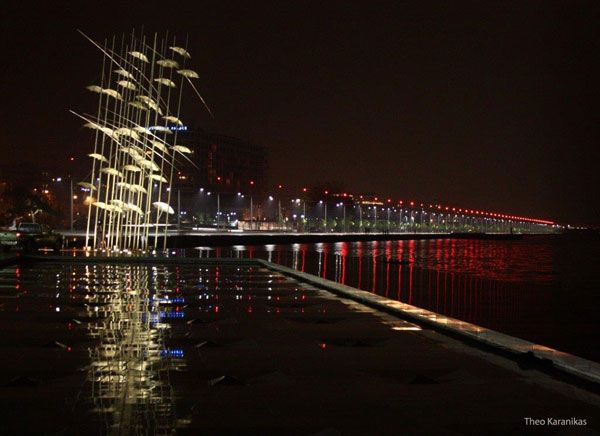
Thessaloniki New Waterfront Landscape Design by Nikiforidis-Cuomo Architects in Thessaloniki, Greece. Photo courtesy of Nikiforidis-Cuomo Architects
9. LaLaport Toyosu, Tokyo, Japan, by EARTHSCAPE — Imitating the Waves
Most projects that have been presented so far use the land geometry to work along or beyond the water’s edge. The urban dock LaLaport Toyosu’s topography has been inspired by the ocean waves, found in a static state. The dock surface resembles water volumes emerging from the sea just before they break toward the coast. The landscape is the ocean, and the visitors are the voyagers that wonder over it. It is an original, inspiring metaphor to create a space of reverie and escapism.
See the full article on LaLaport Toyosu
10. Dania Park, Malmö, Sweden, by Thorbjörn Andersson and Sweco Architects — States of Being by the Sea
Last but not least, Dania Park in Malmö showcases the various ways one can approach and experience the coast. This shoreline park offers different ways to be close to the sea. These range from simple access to purposeful challenge. The park offers a broad experience of climate changes and variations. It allows visitors to enjoy Malmö’s sunny summer days, watch the violent autumn storms, and endure the calm, frosty winters along the waterfront.
See the full article on Dania Park
–
Most of us if not all of us have had some experience with seasides. For one simple reason, they are a people magnet, an escape and synonomous with fun, leisure and sunshine. So taking this into account, isn’t it vital that we harnmonise ourselfs with them, so that we cannot just appreciate their natural beauty but also create sustainable places. The 10 examples above are some of the best out there, but there are likely many more. Which Seaside regeneration projects do you think are worth noting?
Recommended Reading
- Natural Swimming Pools: Inspiration For Harmony With Nature by Michael Littlewood
- You Can Draw in 30 Days: The Fun, Easy Way to Learn to Draw in One Month or Less by Mark Kistler
Article by Eleni Tsirintani
Published in Blog



